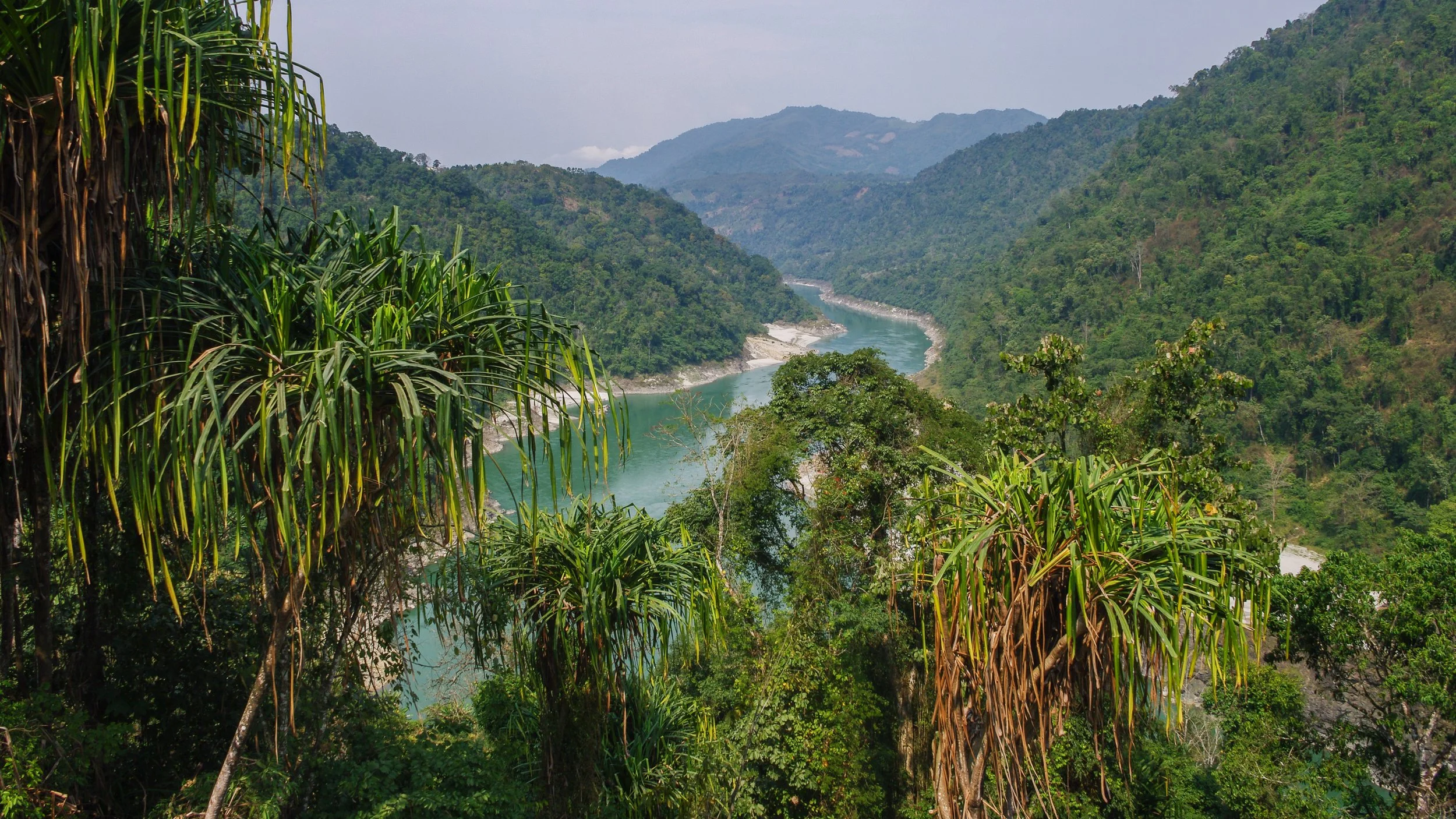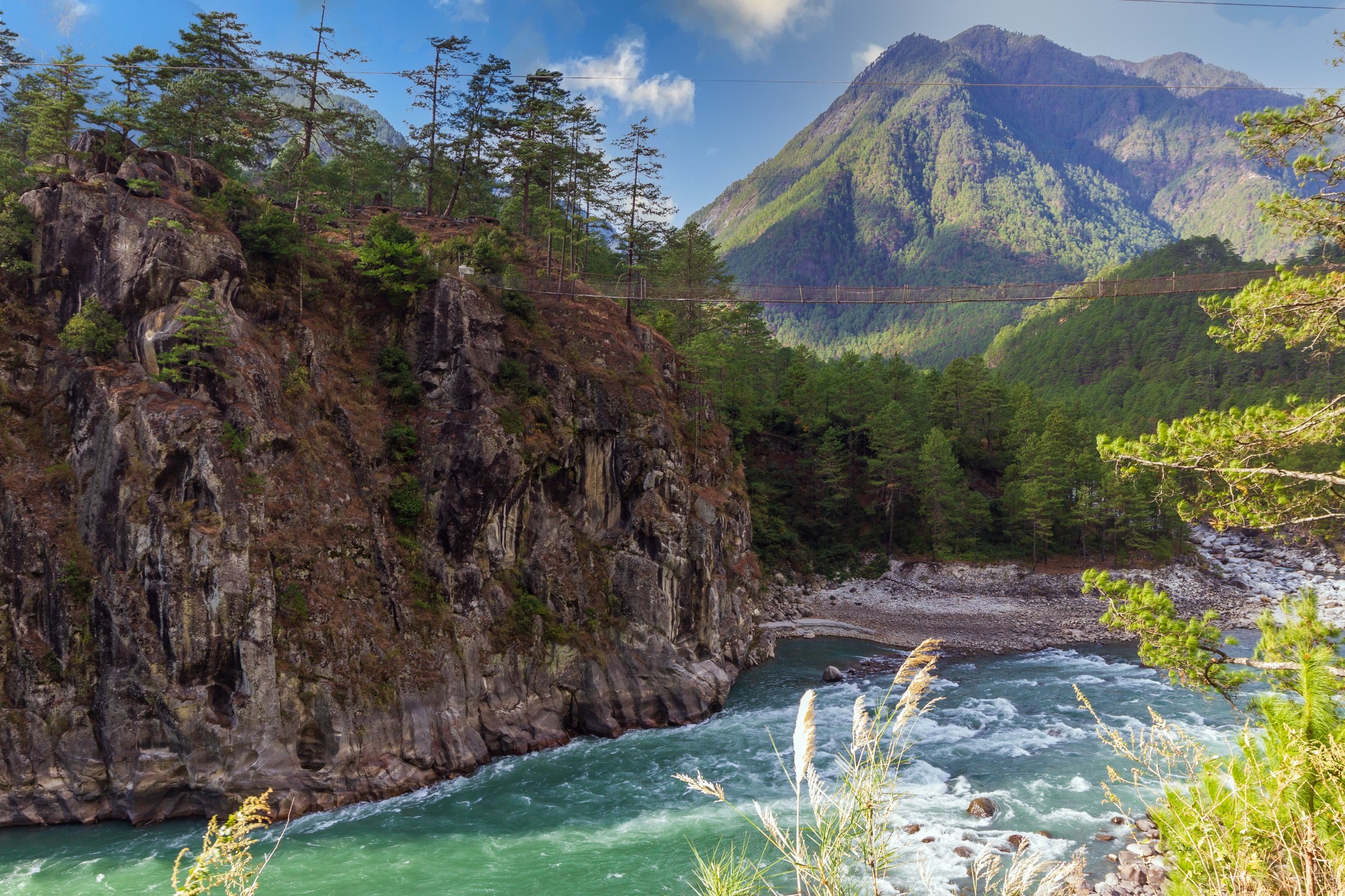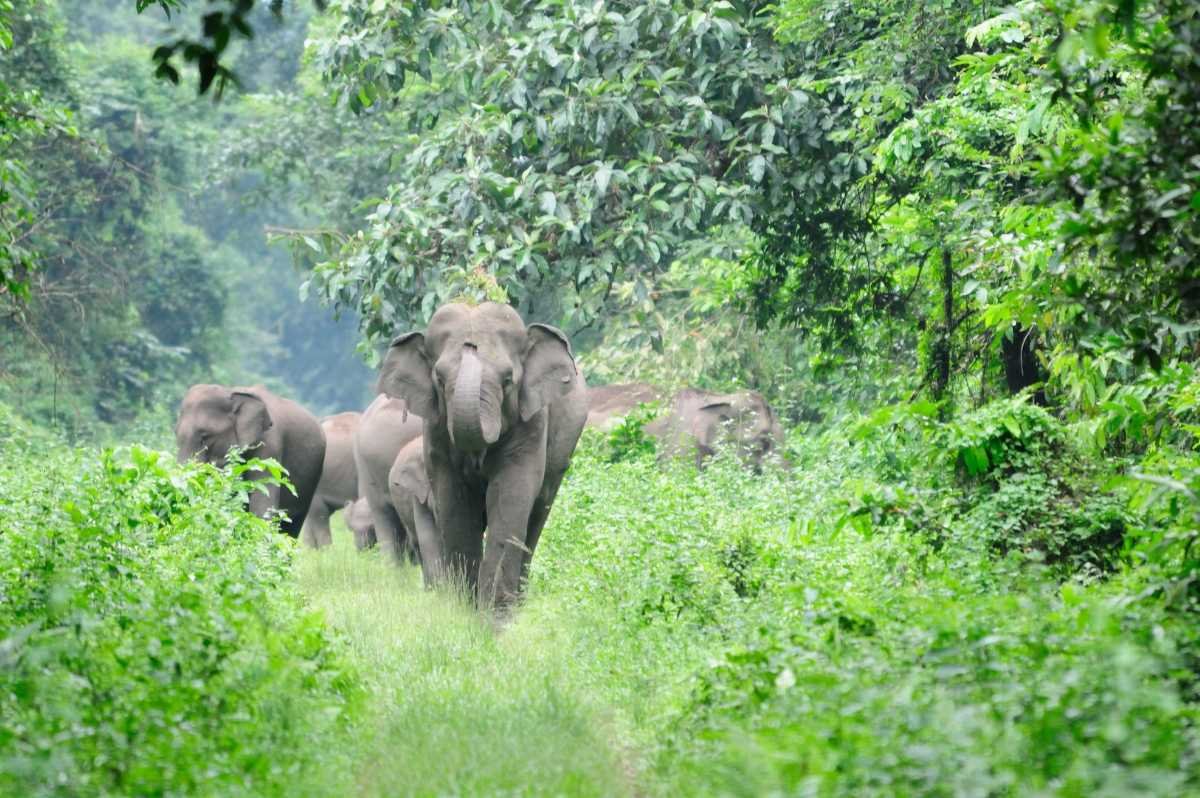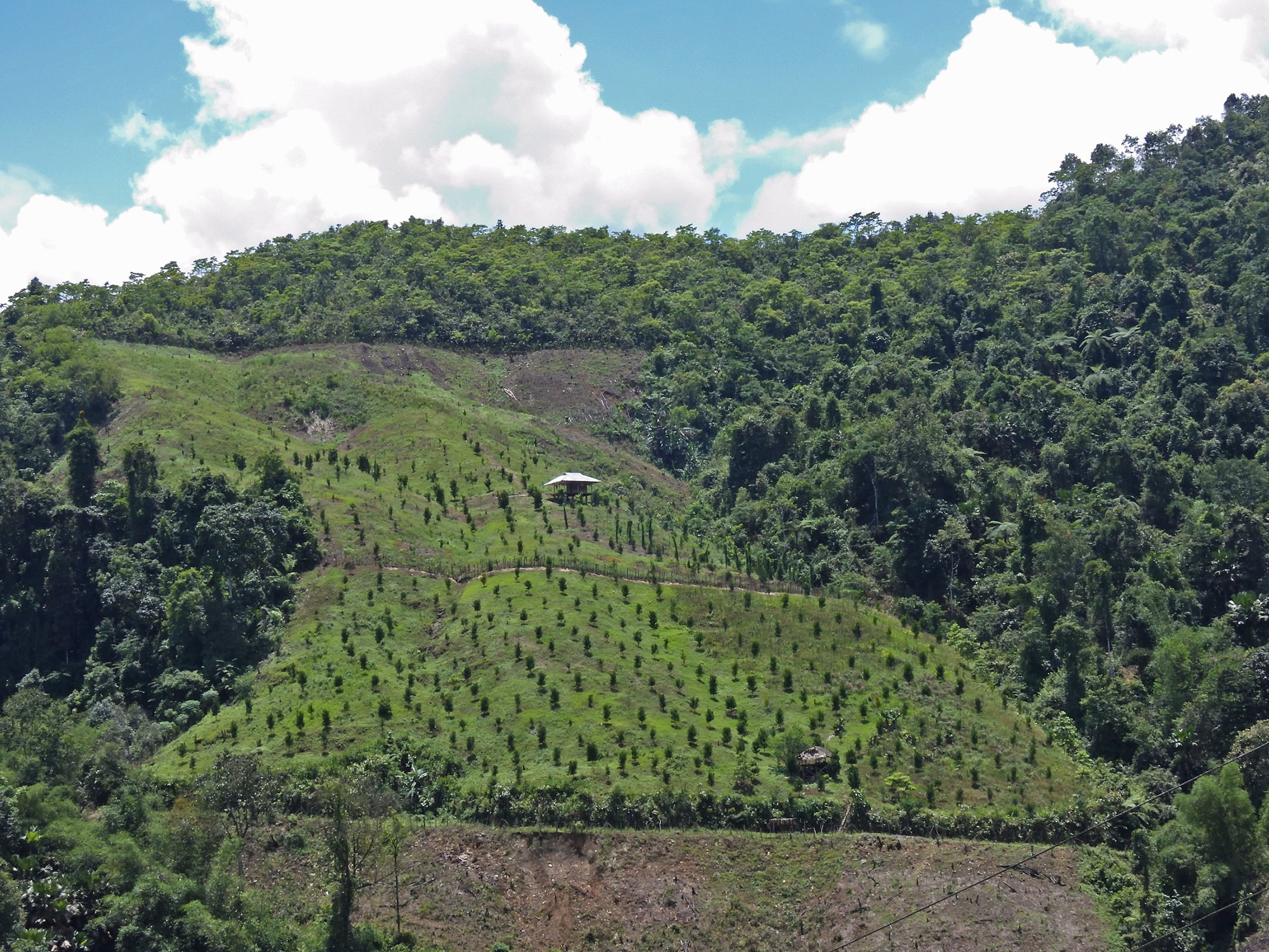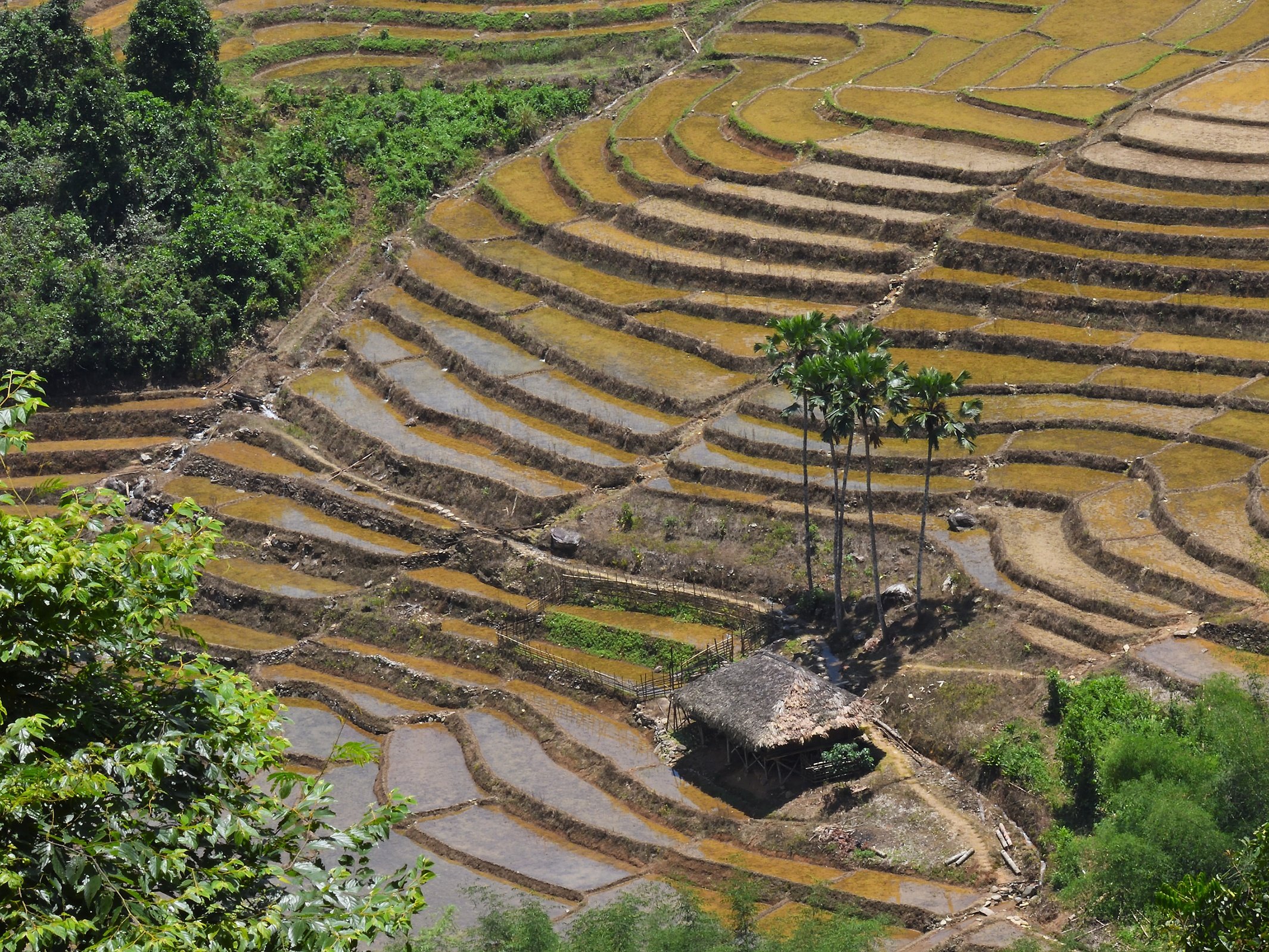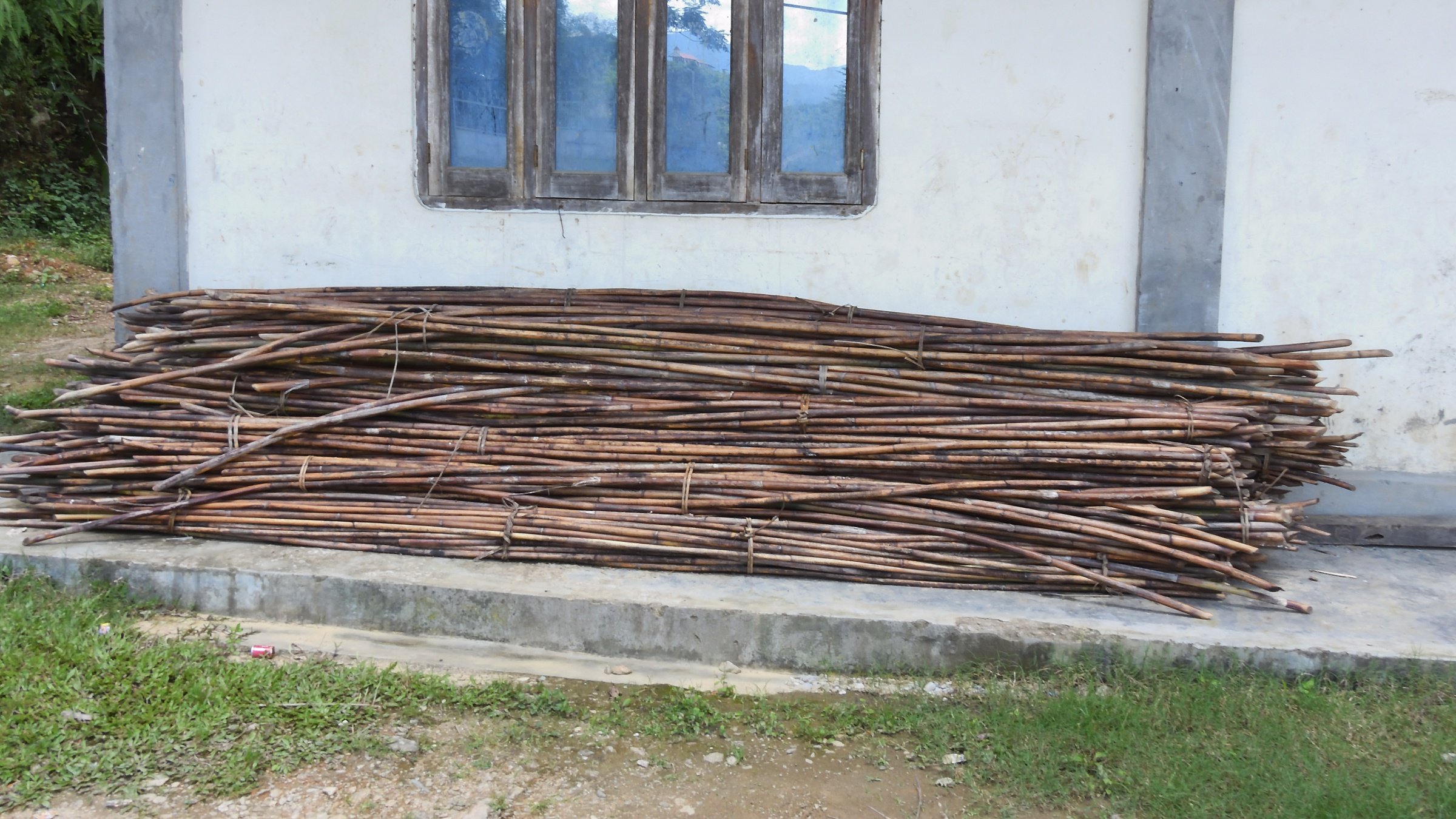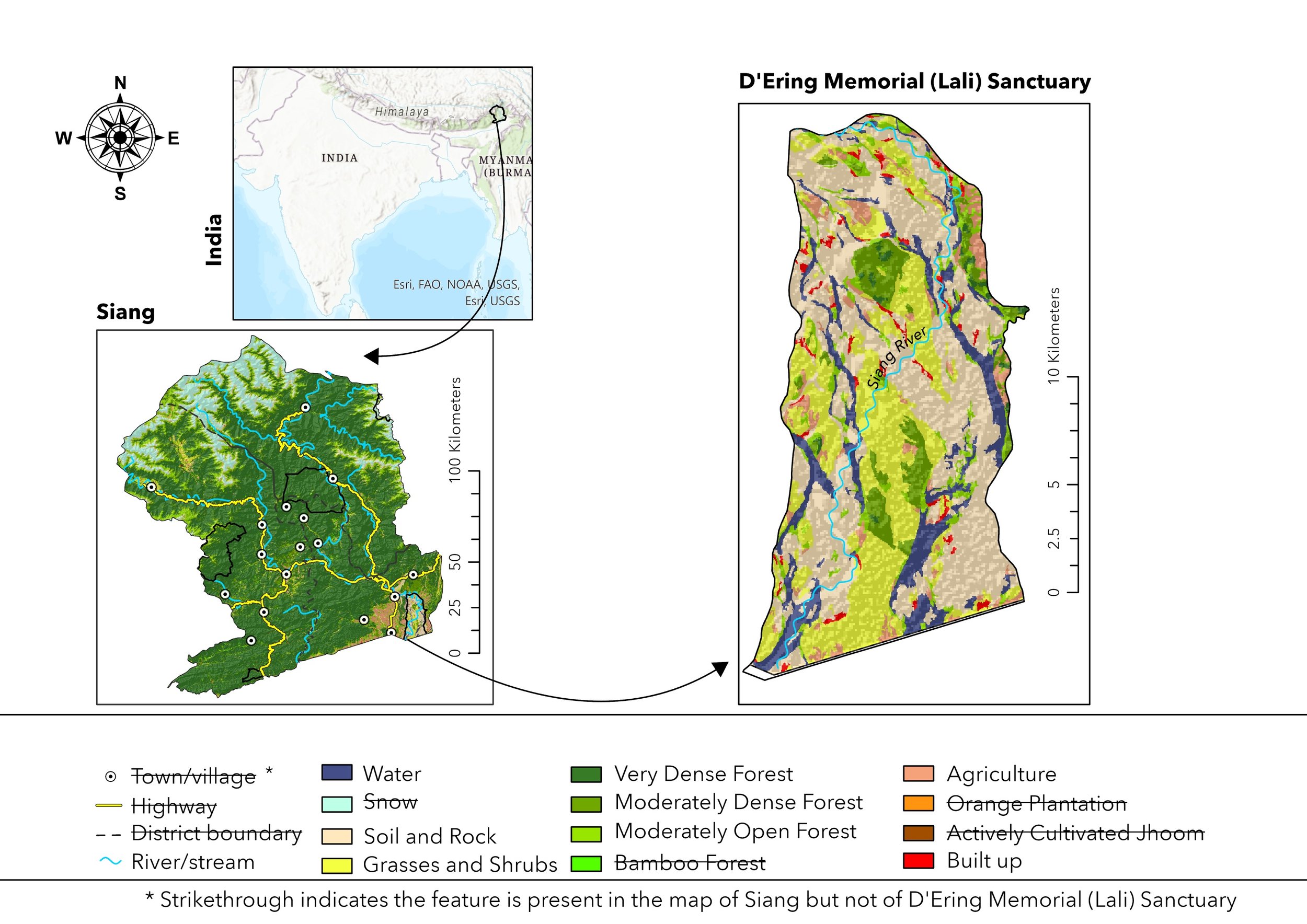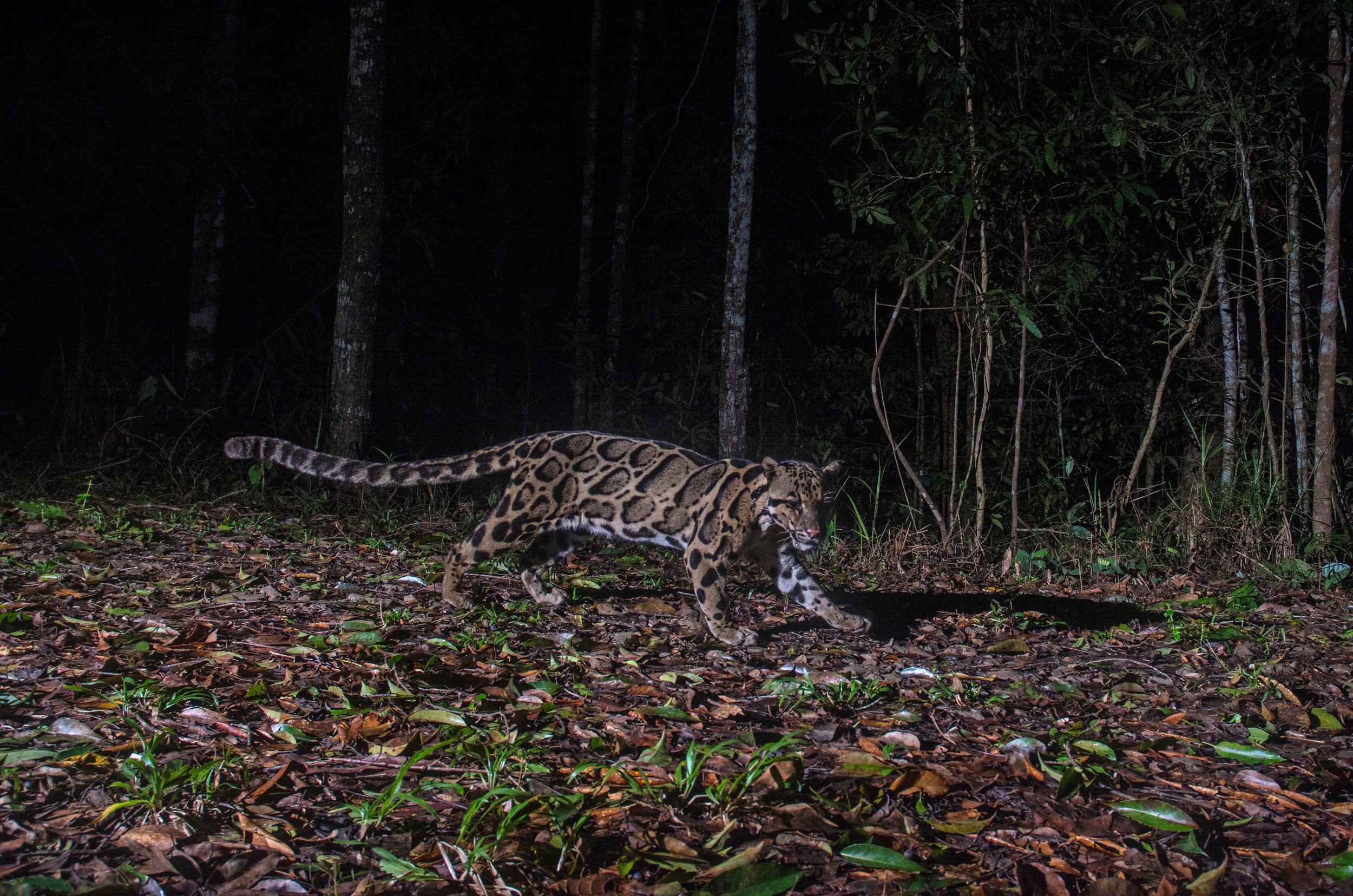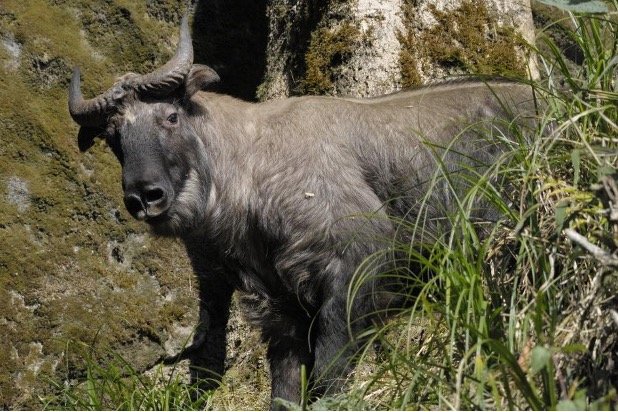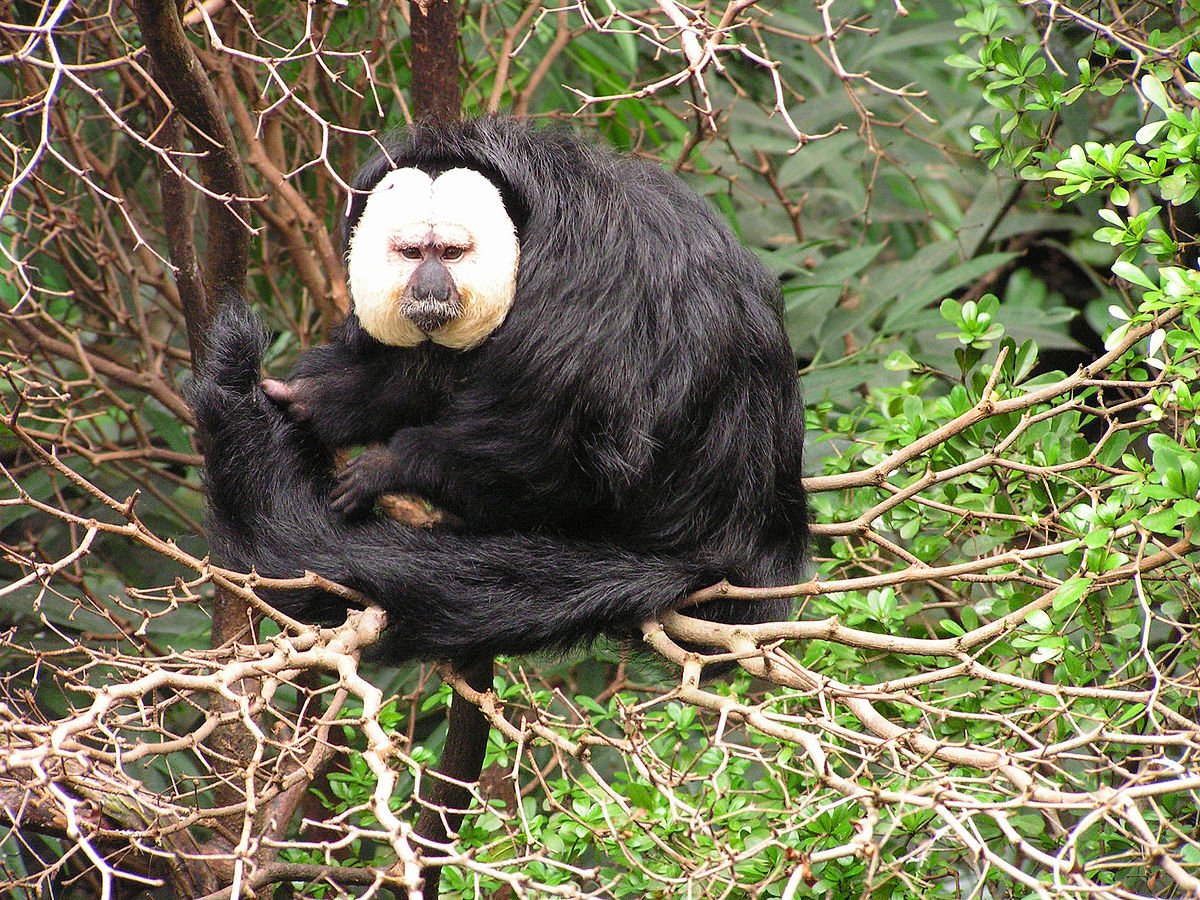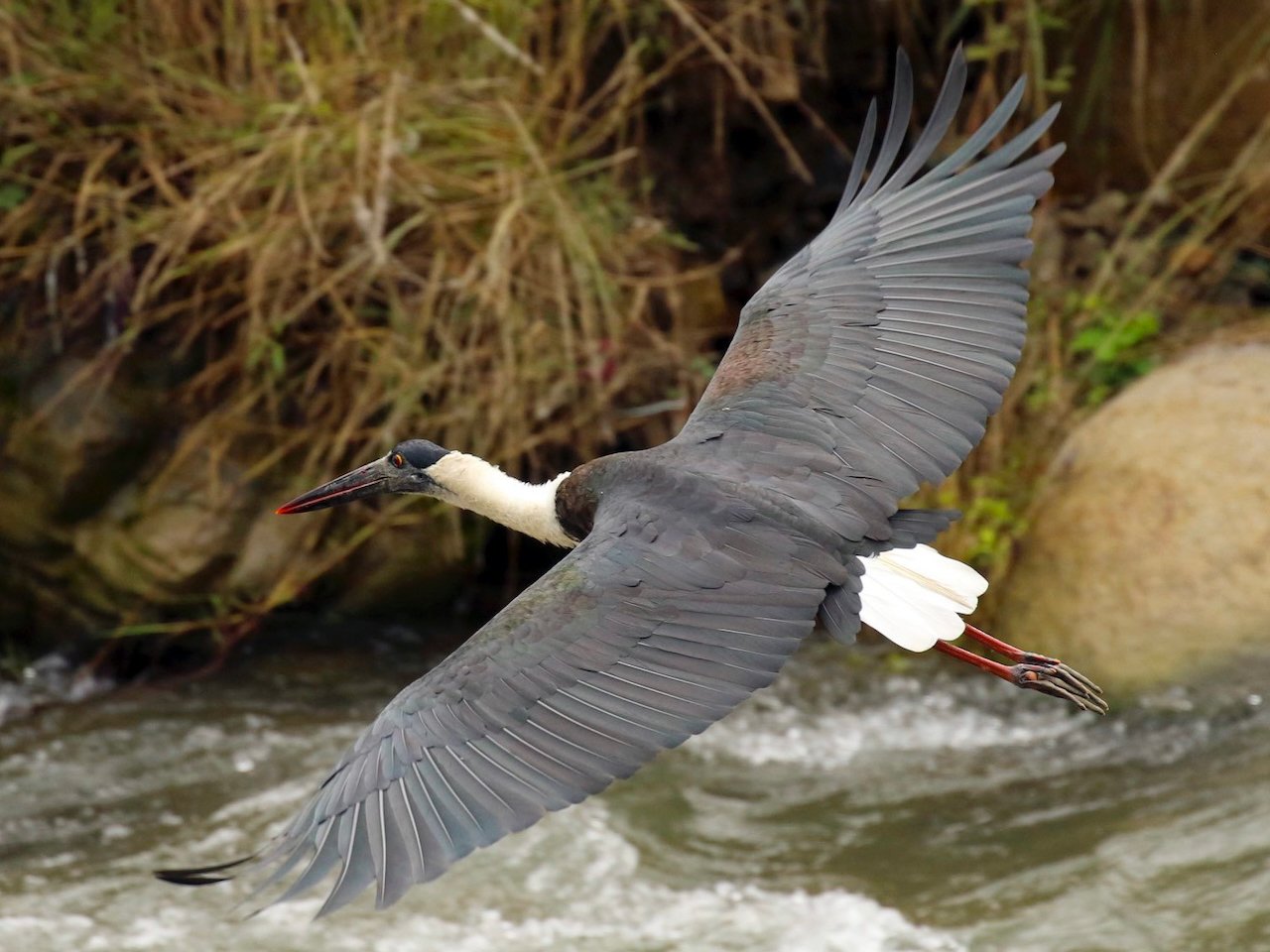Arunachal Pradesh: Scientists, researchers call for suspending Siang Valley dam construction
Updated 06/21/25
Photo ©shutterstock.com
They argued that resistance to the project by local communities reflected a grounded understanding of its ‘ecological, cultural, and socio-political risks.’
The proposed Siang Upper Multipurpose Project in Arunachal Pradesh has been met with strong opposition from 114 scientists, researchers, and practitioners who have raised concerns about the project's impact on the environment, local culture, and society and have demanded a halt to all work on the site, including surveys and pre-clearance procedures.
The Siang River, the primary tributary of the Brahmaputra, originates in Tibet and empties into Arunachal Pradesh. Supposedly India's biggest dam, the 11,000 MW Siang Upper Multipurpose Project, would be built on this river.
For several years, locals in the area have been fighting against the proposal. The Adi people of the Siang basin are asserting that their homelands and traditional practices are in jeopardy due to the project.
According to a Monday statement from the collective, local groups in the area were opposing the project because of "a grounded understanding of the ecological, cultural, and socio-political risks" it carried.
According to the declaration, the Adi people consider the Siang River, whose other names include "Ane" and "Mother Siang," to be a sacred and fundamental part of their culture and way of life.
“Hydropower construction involving tunneling, road blasting, and reservoir formation would disrupt the relationship the Adi people have with Ane Siang,” it said.
The collective said that in the past, displacement often led to long-term socio-economic disruption, and compensation mechanisms rarely accounted for non-monetary values such as land-based identity, ecological knowledge, and customary rights.
The collective also said that the communities in the Siang Valley depended on over 250 species of wild plants and animals for subsistence, medicine, and cultural practices.
“The region is also home to a unique, highly sophisticated system of terraced wet rice cultivation practiced by indigenous Adi communities,” the statement said. “The Upper Siang Dam would submerge many of these terraces and disrupt irrigation systems, causing permanent loss of both farmland and traditional knowledge.”
The collective noted that the site of the Siang Upper Multipurpose Project fell in Seismic Zone V, which is the highest risk category for earthquakes as per the Bureau of Indian Standards.
“Building large dams in such zones increases risks of earthquake-triggered landslides, dam failure, and reservoir-triggered seismicity,” it said. “Climate change has also intensified the frequency of glacial lake outburst floods, cloudbursts, and slope failures in the region.”
The collective noted that the Siang river originated in the Tibet Autonomous Region of China, making it strategically significant.
“Upstream hydropower and water diversion projects by China on the Yarlung Tsangpo have raised concerns over sediment flow, seasonal discharge, and water availability,” it said, adding that large infrastructure projects like the Siang Upper Multipurpose Project were often framed as strategic countermeasures.
“However, these projects disproportionately burden the local communities in Arunachal Pradesh,” the collective said. “The imposition of such projects without broad-based consent undermines trust in governance and democratic institutions.”
The statement also said that the project violated the 2006 Forest Rights Act, the 2002 Biological Diversity Act and several other international environmental and Indigenous rights agreements.
The statement urged the center and the Arunachal Pradesh government to ensure the full recognition of community forest and resource rights under the Forest Rights Act.
The Project in Question
The Siang Upper Multipurpose project was first proposed in 2017 by Niti Aayog, a public policy think tank of the Union government.
The dam was meant to counter the threat posed by Chinese hydropower projects being developed on the Yarlung Tsangpo river upstream, according to an Indian inter-ministerial technical committee report of 2022, seen by Scroll.
The Brahmaputra or Siang, is known as Yarlung Tsangpo in Tibet, where it originates.
Chief Minister Pema Khandu has defended the dam as a way to protect the Adi tribes from a massive 60,000 MW Chinese dam that is, however, yet to be built.
Khandu claimed that the Chinese government, which is not a signatory to the international water conventions, “intends to divert water from the multiple water reservoirs to be created under the project to dry regions of Tibet and elsewhere,” leading to a fall in the volume of water in the Siang.
The Siang Upper Multipurpose Project, he said, has been proposed by the Union government to maintain the natural flow of water in the river all year round and “flood modulation” in case of a drastic water release by China.
However, residents of the area are skeptical about the government’s claim and fearful of losing their ancestral land and way of life. In a statement, representatives of the villages had pointed out, “The Siang region’s land comprises loose sedimentary rocks and is situated in a [fragile] seismic zone, rendering the feasibility of dams invalid in any sense.”
The Siang Indigenous Farmers’ Forum, a collective of agriculturists from the Adi community that has been heading protests, estimates that 40 villages along the Siang river – in Siang and Upper Siang districts—would be affected because of the proposed dam.
GC Mission to Arunachal Pradesh, Eastern Himalaya, India: Adi Community Protection Initiative
Global Conservation, in partnership with the Ashoka Trust for Ecology and Environment (ATREE), has embarked on a new initiative focused on Global Park Defense and Community Protection in the forested areas adjacent to Mouling National Park (MNP) in the Siang Valley of Eastern Arunachal Pradesh, located in the Eastern Himalayan landscape of India.
The Himalaya Mountain Range is one of the most significant global hotspots of biodiversity and is known as the water tower of Asia, and the "third pole" in terms of the ice harbored by its glaciers. Within the Himalayas, the diverse, unexplored, and unique forests of the Eastern Himalayas have an unusually high and unique biodiversity. These forests are also our main buffers against climate change. However, the region’s natural assets are threatened by development pressures. GC supports ATREE’s work, which is focused on the Siang Valley landscape, the source of India’s largest river, the Brahmaputra, and inhabited by the Adi indigenous community.
Courtesy of our Partner ATREE
The region in the Siang Valley, within which MNP is situated, is characterized by forested areas largely owned by local Adi communities. These regions, inhabited by only a few Adi villages, represent some of the most remote areas in India. Notably, many of these areas lack road infrastructure and remain untouched by modern development.
This project will be based on ATREE’s unique approach to conserving biocultural diversity through three critical pillars: a) science to identify what, where, and how to conserve; b) local stakeholder consultations about how to sustain and nurture local landscapes and their natural elements; and c) strengthened local capacity and stewardship to cope with change and manage natural resources. It aims to strengthen local protected area (PA) management and empower the surrounding communities to actively conserve and protect their forests from illegal hunting and logging activities. The initiative will prioritize long-term investments to enhance income opportunities and livelihoods through sustainable, non-destructive forest utilization practices.
Protecting the last intact montane forests of India in the foothills of the Himalayas, this new GC Project reinforces indigenous culture and land rights in this critical area threatened by massive new dams flooding their villages, croplands, and critical habitats for threatened and endangered species.
The Siang Valley encompasses seven administrative districts, namely East Siang, Siang, Upper Siang, Lepa Rada, Lower Siang, West Siang, and Shi Yomi. This region is blessed with fertile land and is renowned for its agricultural productivity, owing to the significant silt deposition contributed by the Siang River, which serves as the primary channel of the mighty Brahmaputra River downstream. The area boasts a remarkable biodiversity, representing the Eastern Himalayan biodiversity hotspot, the Indo-Malayan biodiversity hotspot, as well as the South China central hotspot.
In such a vibrant environment, where the traditional practices of hunting and wet terrace rice cultivation are deeply ingrained, the clearance of forested land, along with poaching and hunting activities, is of great concern, especially with the escalating human population. Currently, the Siang Valley is home to approximately 250,000 people, with the majority belonging to the Adi tribal community. Other communities, such as the Galo, Tangin, Memba, and Khamba, also reside in the region.
Distressingly, over the past two decades, the Siang Valley has witnessed a staggering decline in forest cover. This deforestation primarily occurs in areas with higher human habitation, and the increasing population exacerbates the alarming rate of forest loss. In collaboration with the Ashoka Trust for Ecology and Environment (ATREE), Global Conservation is committed to safeguarding this landscape from further deforestation. This crucial mission relies on the support and collaboration of the forest department and the local Adi community institutions and leaders. Urgent action is imperative, as without immediate intervention, the Siang Valley will experience the irreversible loss of most of its forest cover within the next few decades.
Mouling National Park
Arunachal Pradesh, India
Figure 1 Map of the Mouling National Park, embedded within the larger Siang Valley landscape of Arunachal Pradesh, India.
Map Courtesy: ATREE Siang Valley Team
Mouling National Park (MNP), encompassing an area of 483 km², and spanning an altitudinal range of 750 to 3064 m, represents one of India's largest remaining tracts of pristine primary and dense sub-tropical broadleaf evergreen forests. Situated in the Upper Siang district, as well as parts of Siang and West Siang, this park derives its name from the towering Mouling Peak, which reaches an elevation of 3064 meters above sea level. Furthermore, the park forms an integral part of the expansive Dihang-Dibang Biosphere Reserve (DDBR), which also includes the Dibang Wildlife Sanctuary, which spans a vast area of 5,112 km². Notably, the DDBR is the largest biosphere reserve found within the Eastern Himalayan region.
Enveloped by a breathtaking backdrop of untouched mountains, MNP harbors an astonishing array of flora and fauna, representing an invaluable array of biodiversity. Nevertheless, this region remains largely unexplored and unfamiliar, standing as one of the lesser-known areas within the Eastern Himalayas. Presently, the park faces grave threats from rampant illegal logging in its eastern section, where the construction of new roads has facilitated such activities. Additionally, hunting poses a significant threat to the park's integrity. Moreover, looming on the horizon is the proposed Siang Valley Hydro-electric Project, which aims to construct massive dams, ultimately leading to the complete submergence of numerous settlements and vast hectares of agricultural lands. These areas hold crucial habitats for endangered species such as the Asiatic Black Bear (Ursus thibetanus) and Clouded Leopard (Neofelis nebulosa), as well as several vulnerable species, including Takin (Budorcas taxicolor), Bharal (Pseudois nayaur), and Himalayan Goral (Nemorhaedus caudatus). These impending threats are in line with the larger trend of forest loss in India, which has witnessed a disheartening decline of 28% over the past two decades. Arunachal Pradesh, the largest state within the northeastern region of India, alone accounts for a 15% reduction in forest cover during the same period, as per the Forest Survey of India’s bi-annual State of India Forests 2021.
MNP is flanked by the Siyom River along its western boundary, while several smaller rivers such as the Semong, Krobong, Subong, and Siring meander through the park, ultimately joining the Siang River and forming its eastern border. The administration of the park falls under the purview of the Divisional Forest Office located in Jengging, situated 130 km away from the park and 185 km from the nearest town of Pasighat.
Currently, the villages surrounding Mouling National Park are positioned at least 10 to 50 kilometers away from the park boundaries, allowing for the preservation of natural primary forests in the immediate vicinity. However, the construction of new roads into these pristine areas, coupled with the proposed 10 MW dam within the Siang Valley, poses a severe threat. These initiatives are projected to attract tens of thousands of settlers to these remote mountainous regions, potentially leading to the extinction of the Adi People in their current form. With a mere two forestry officers, two rangers, and a Park Director, along with minimal field staff, tasked with safeguarding over 40,000 hectares of challenging mountainous terrain, the protection of MNP becomes an impossible undertaking. Each year, the clearing of land by thousands of individuals for cultivating crops such as corn, oranges, and bananas results in the destruction of the surrounding forests, eroding the last vestiges of India's intact primary forests.
In pursuit of the larger objective to safeguard the world’s last remaining montane forests in the Eastern Himalayas, the newly proposed GC Project takes a firm stance on preserving the indigenous culture and land rights of the Adi communities. Deeply intertwined with the forests, environment, and biodiversity, the Adi community holds a profound connection to these natural resources. The project's primary focus lies in mitigating and addressing the aforementioned critical threats to their cultural heritage and the region's rich biodiversity. By doing so, it strives to uphold and reinforce the Adi community's long-standing traditions and sustainable livelihood practices, which have effectively conserved these forests for potentially countless generations.
While the well-known and high-profile protected areas in India, particularly those that can boast of harboring iconic species such as rhinoceros and tigers, receive substantial funding for their protection, remote protected areas in Arunachal Pradesh, such as MNP, lack comparable financial resources and staffing. MNP, for instance, currently employs a mere one ranger for every 10,000 hectares, in stark contrast to the higher-profile PAs of India, where the ratio ranges from one ranger for 7,000 to 8,000 hectares. Similarly, the allocation of approximately 3–4 forest guards per beat falls significantly short in low-profile protected areas, whereas high-profile parks often benefit from around 100 forest guards per beat.
OVERVIEW
Global Conservation is proposing an integrated program for Park and Wildlife Protection combining local Community-based conservation and exploring the development of wildlife tourism in and around Mouling National Park in Arunachal Pradesh, India.
In addition, we aim to work with park and wildlife authorities and local communities to deploy Global Park Defense for improving the effectiveness of nature and wildlife protection in Mouling National Park & Daying Ering (D’ering) Memorial Wildlife Sanctuary in the initial phase, followed by a few more additional protected areas in Siang and adjoining Dibang valley in Arunachal Pradesh.
Enveloped by a breathtaking backdrop of untouched mountains, MNP harbors an astonishing array of flora and fauna, representing an invaluable trove of biodiversity. Nevertheless, this region remains largely unexplored and unfamiliar, standing as one of the lesser-known areas within the Eastern Himalayas. Presently, the park faces grave threats from rampant illegal logging in its eastern section, where the construction of new roads has facilitated such activities. Additionally, hunting poses a significant threat to the park's integrity. Moreover, looming on the horizon is the proposed Siang Valley Hydro-electric Project, which aims to construct massive dams, ultimately leading to the complete submergence of numerous settlements and vast hectares of agricultural lands. These areas hold crucial habitats for threatened and endangered species such as the Asiatic Black Bear (Ursus thibetanus), Clouded Leopard (Neofelis nebulosa), Takin (Budorcas taxicolor), Bharal (Pseudois nayaur), and Himalayan (Himalayan Goral (Naemorhedus goral) and Indo Chinese Goral (Nemorhaedus caudatus).
PRIMARY OBJECTIVES
Park-Wide Communications
Community Protection
SMART Patrolling
Signage and Boundary Markers
Biodiversity Recovery
Mouling National Park has excellent potential to become a popular nature tourism destination due to its incredible geology, incredible bird diversity, and rare and elusive wildlife. The intact forests and critical yet breathtaking river ecosystems add to the enchantment of the area.
By combining all the most important core areas and developing new corridors for wildlife connectivity through community-based conservation of forests and improvement in the management and protection within the existing protected area, we expect Mouling National Park in the mountains and Daying Ering Memorial Wildlife Sanctuary within the river-islands of the Siang, further downhill, to become important destinations for hardcore wildlife enthusiasts, birders, trekkers, hikers, and nature enthusiasts.
Threats
- Illegal Land Settlement
- Illegal Logging
- Land Clearing
- Hunting for Trade and Trafficking
Background: Mouling National Park
IUCN Category II (National Park)
Upper Siang, Arunachal Pradesh
Area: 483 km2 (186 sq mi) or 48,000 hectares
Established on December 30, 1986
Department of Environment and Forestry of Arunachal Pradesh
Mouling National Park is the second national park to be created in the state, after Namdapha National Park in 1972.
The park is named after the nearby Mouling Peak. Mouling is an Adi word that means red poison or red blood, which is believed to be red latex from a tree species found locally.
The national park covers an area of about 483 km² forming the western part of the Dihang-Dibang Biosphere Reserve. The terrain is rugged, with an altitudinal range of 750 to 3064 m at the highest point known as Mouling Peak.
The Siyom River flows along the western fringes of the park and several small rivers such as the Siring, Krobong, Semong, and Subong drain into the Siang River near the eastern boundary of the park.
The park is under the administrative control of the Divisional Forest Office located in Jengging, and the nearest major towns are Along and Pasighat, 130 km and 185 km from the park, respectively.
An approach to the park is not possible via roads due to the remoteness of the area and the poor communication facilities in the area. The nearest airfield is located in Pasighat.
Forest cleared for oranges, rice paddies, and cane sugar stocks (harvested).
As pictured in the last image above, this is wild cane or Rattan (Calamus spp) whose stems are in high demand and largely used to make crafts and furniture.
Each year, the clearing of land by thousands of individuals for cultivating crops such as corn, oranges, and bananas results in the destruction of the surrounding forests, eroding the last vestiges of India's intact primary forests.
The recent spurt in the construction of new roads into these pristine areas, coupled with the proposed 10 MW dam within the Siang Valley, poses a severe threat. These initiatives are projected to attract tens of thousands of settlers to these remote mountainous regions and can have serious negative impacts on the local culture, forests, and biodiversity. With a mere three rangers and a Park Director, locally known as the Park Divisional Forest Officer (DFO), along with a handful of field staff, safeguarding over 40,000 hectares of forests spread across remote and rugged mountainous terrain can be highly challenging.
In pursuit of the larger objective to safeguard the world’s last remaining montane forests in the Eastern Himalayas, this newly proposed GC Project aims to preserve the indigenous culture and land rights of the Adi communities, which are deeply intertwined with the forests, environment, and biodiversity, and strives to uphold and reinforce the Adi community's long-standing traditions and sustainable livelihood practices, which have effectively conserved these forests for potentially countless generations.
While the well-known and high-profile protected areas in India, particularly those that can boast of harboring iconic species such as rhinoceros and tigers, receive substantial funding for their protection, remote protected areas in Arunachal Pradesh, such as MNP, lack comparable financial resources and staffing. MNP, for instance, currently employs a mere one ranger for every 10,000 hectares, in stark contrast to the higher-profile PAs of India, where the ratio ranges from one ranger for 7,000 to 8,000 hectares. Similarly, the allocation of approximately 3–4 forest guards per beat falls significantly short in low-profile protected areas, whereas high-profile parks often benefit from around 100 forest guards per beat.
The Forest Department’s managerial control is limited by the lack of road communication, and all of the divisional/range/beat offices are located well outside the park. The park boundaries have been drawn through an aerial survey based on artificial and natural boundaries such as the Siyom River in the west, and on-ground demarcation of sections of the boundary is still not complete.
Currently, the park has three ranges: the Ramsing range accessible from the Bomdo village, the Jengging range accessible from the Lissing village, and the Payum range through the Payum village.
Executive Director Jeff Morgan with the Adi People
The Adi People number over 200,000 up and down the Siang River Valley, with key villages involved in the project to reduce logging and deforestation, as well as hunting pressures.
From 2002 to 2022, India lost 393 kha of humid primary forest, making up 18% of its total tree cover loss in the same time period. The total area of humid primary forest in India decreased by 3.9% in this time period.
India ranked second highest for the deforestation rate after losing 668,400 hectares of forest cover in the last 30 years. India also topped the chart for the biggest increase in deforestation between 1990 and 2020, with a difference of 284,400 hectares in forestry loss.
India has lost 2.4% of its forests in the past 30 years, with Arunachal Pradesh, one of the Seven Sisters states of NE India, losing 4% of its forests in the same period.
Stopping logging and deforestation will take a concerted effort between Adi Communities, National Park authorities, and the leadership of ATREE.
Working with the Adi indigenous communities in the Gateway villages to Mouling National Park, Global Conservation is funding an integrated program of:
Sustainable Tourism and Agriculture
Community Patrolling
Reinforcing National Park Ranger Teams
Sustainable Tourism and Agriculture
As we have done in other GC Projects, investing in low-impact ecotourism facilities, guide associations, and training will help replace the need to hunt and expand clearing for agriculture.
The Adi Communities of Siang Valley want to reinforce their cultural traditions and sustainable livelihoods, which have protected these forests for possibly thousands of years.
ECO-TOURISM ALTERNATIVES
The Adi villages, which form the Gateways to the National Park, will receive investments in Community Lodging to enable visitors—birders, botanists, wildlife enthusiasts, photographers, and those interested in indigenous cultures (including artisanal products, music, and dance)—to stay for multiple days. This will bring much-needed income into the community, thereby reducing the need for hunting dwindling species and logging forests.
As a reminder, the area around Mouling National Park is one of great biodiversity, with a juxtaposition of different biotopes, and is often called the state's cradle of biodiversity. With elevations ranging from 400 m to over 3000 m in the park, it forms a transition zone between tropical forests at lower altitudes and most temperate forests at altitudes above 2800 m. Many endangered species like takins, clouded leopards, golden langurs, hornbills, Sclater's monals, and serows are spotted here.
Community Protection is the Only Viable Strategy
Preserving vast, untouched forests in the absence of government authorities necessitates the establishment of robust organization and coordination within the Indigenous Communities residing around the National Park. The Adi communities possess remarkable hunting skills, honed through their deep connection with the forest and wildlife, resulting in an extensive accumulation of invaluable local ecological knowledge. Due to their significantly low population densities (approximately 13 people per square kilometer) and access to expansive areas of impenetrable forests, they have played a crucial role in protecting animal populations from the brink of extinction. Their well-managed hunting territories have contributed to the recovery of various species.
However, as external pressures mount, maintaining this delicate balance becomes increasingly challenging. The younger generation's waning interest in hunting, coupled with the greater availability of farmed products, offers hope that the detrimental impact of hunting by the Adi people on wildlife within the National Park will diminish, contributing to its overall protection.
Within these community lands, traditional practices such as deforestation, poaching, and hunting of wildlife are deeply ingrained. Transforming such customary practices necessitates the provision of alternative livelihood sources for the community. Promising avenues for these alternatives lie in the realms of ecotourism and sustainable agricultural practices. By embracing these alternatives, the Adi communities can both preserve their cultural heritage and foster environmentally friendly economic activities.
Primary Goals of the Project:
This project, funded by Global Conservation, has three primary goals as per the multi-year Global Park Defense and Community Protection program:
1. Improved livelihoods and sustainable development for the Adi community to eliminate deforestation in and around MNP and reduce illegal logging-driven forest clearing in Adi Indigenous Territories.
Given the complete lack of roads inside the national park along with a very rugged and densely forested terrain, community Patrolling will be critical. In this regard, transport, logistics, and patrol operations will be funded to enable Community Protection across the entire perimeter of the National Park and Indigenous Territories.
2. Recovery of Key Wildlife Species in MNP & Adi Community Forest Land
Recovery of Key Wildlife Species is planned for the Park through regular monitoring and species recovery programs with adequate support of the forest department and local community. Species recovery of both globally threatened floral and faunal groups will be a part of the species recovery program.
3. Monitoring of MNP & Adi Community Forest Land
To achieve goal 3 (Satellite and ground monitoring), early warning of abnormal forest clearing in and around the National Park and drones used for clear imagery of violations and over-cutting for review with village authorities. The community patrolling team will verify ground-level monitoring at the first stage, followed by the forest department and ATREE.
Satellite and Ground Monitoring
Provides early warning of abnormal forest clearing in and around the National Park, and drones are used for clear imagery of violations and overcutting for review with village authorities.
Community Patrolling
Transport, logistics, and patrol operations will be funded to enable Community Protection across the entire perimeter of the National Park and Indigenous Territories.
Indigenous Forest Protection
Global Conservation is supporting the formation of Adi Forest Protection Committees with the systems, communications, patrolling, and training needed to cover large areas.
In the case where communities cannot internally resolve the issue of cutting near the National Park, great vigilance will be concentrated to those areas. Inside the National Park, authorities will be mobilized to remove invasive illegal activities.
Indigenous Adi Forest Protection Committees
Global Conservation is actively supporting the formation of Adi Forest Protection Committees in collaboration with the forest department. These committees will play a pivotal role in conducting regular patrols while providing essential training to field staff. The objective is to effectively protect the expansive areas surrounding Mouling National Park, including the Adi community land. Forest department authorities will be mobilized within the park's boundaries to eradicate invasive illegal activities. Outside the park, the Adi Forest Protection Committees will strive to address issues related to illegal logging.
To effectively combat illegal logging and deforestation in the Siang Valley, a collaborative effort between Adi Communities, PA authorities, and the leadership of ATREE is being pursued. By working closely with the Adi indigenous communities residing in the gateway villages surrounding Mouling National Park, the initiative aims not only to safeguard the community lands but also to serve as a protective buffer for the National Park.
Keeping the above goals and details in mind, Global Conservation is funding an integrated forest and biodiversity conservation program through ATREE, which will focus on implementing activities in the priority areas listed below:
Threat mapping and assessment across local and regional scales in the Siang landscape (including Mouling National Park & Adi community land).
Biodiversity mapping and inventories that include baseline population estimates of key taxa such as birds, mammals, and butterflies.
Designing sustainable eco-tourism and agriculture modules in consultation with the local communities.
Community patrolling of areas threatened by large-scale logging and hunting.
Increasing the capacity and improving the infrastructure of the National Park staff to reduce and negate threats in MNP.
About ATREE
Ashoka Trust for Research in Ecology and the Environment (ATREE) is a non-profit organization that generates interdisciplinary knowledge to inform policy and practice in conservation and sustainability.
For over two decades, ATREE has worked on social-environmental issues at the local policy level. ATREE envisions a society committed to environmental conservation and sustainable and socially just development.
ATREE's mission is to generate rigorous interdisciplinary knowledge for achieving environmental conservation and sustainable development in a socially just manner, to enable the use of this knowledge by policymakers and society, and to train the next generation of scholars and leaders.
To deliver on its mission, ATREE works across issues like biodiversity and conservation, climate change mitigation and development, land and water resources, forests and governance, ecosystem services, and human well-being.

